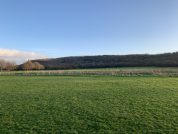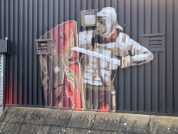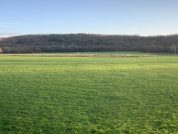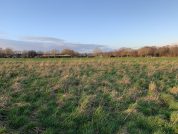Cardiff Roman Villa
Villa
This Roman villa is situated on the valley floor of the River Ely to the south-west of the river in the middle of Trelai Park in Ely, Cardiff.
The site comprises the remains of a villa dating to the Roman period AD120 and continued in use until after AD325. A coin found in the building was ‘ third brass’ of Constantine I, minted A.D. 320-4. Abandonment was probably as a result of increasing insecurity from sea-borne raiders.
Excavations of Cardiff Roman Villa
It was excavated by Mr. John Storrie, a local antiquary, in 1894. Further investigations were undertaken in 1922 by Sir Mortimer Wheeler who was then Director of the National Museum of Wales. In more recent years, archaeologists from Cardiff University have undertaken a geophysical survey over the villa.
What did the Cardiff Roman Villa look like?
The villa was built upon an island formed between two streams flat tree-lined marsh. A Roman road leading northwards from the villa would probably lead directly to the site of Ely Bridge which suggests a crossing of the River Ely at this location may date back to Roman times at least.
The earliest structures appear to have been two, two storied buildings, with a courtyard in between protected by a northern boundary wall. The main building to the east was 20m by 18m and had a half H shaped plan with wings extending to the south. The whole of the south front was faced by a single-storey veranda with the main entrance, open entrance-court being between the wings. The main entrance would have been approached from the south by a paved path made from slabs and broken stone between well-defined kerbs.
Close by lay a second building, oblong in plan, again with a veranda along the main front.
The buildings were surrounded by four banks and ditches some of which may represent an earlier, Iron Age enclosed settlement perhaps contemporary with the Late Iron Age occupation at Caerau Hillfort.
Abundant traces of iron working were found, and in the earlier excavations an actual foundry was discovered. Immediately to the north of the second building was a human skeleton in an east-west position, possibly a Christian burial. Small finds from the excavations include coins, horseshoes, a lead strainer, bronze and bone pins, large quantities of iron slag, bone counters, samian ware and course pottery, some of it repaired with rivets.
Sources for Cardiff Roman Villa
- https://coflein.gov.uk/en/site/301355/
- Ancient remains at Ely Racecourse: Letter from Mr John Storrie, Western Mail 23rd April 1894 page 6
- Ancient remains near Cardiff. Western Mail Friday August 17th 1894 page 7
- Prehistoric & Roman Wales by R.E.M. Wheeler, published by the Clarendon Press, Oxford, 1925, pages 257-258
- R. E. M. Wheeler, A Roman Fortified House near Cardiff, Journal of Roman Studies, Volume 11, pp 67-85, 1921, Cambridge University Press
- Meeting of the Parks, Baths and Cemeteries Committee 10th April 1952
Sites near Cardiff Roman Villa
- Caerau Hillfort, Cardiff (2 km)
Iron Age Hillfort - Caerau Hillfort, Llantrisant (2 km)
Iron Age Hillfort - Cardiff (Tamion?) Roman Fort (3 km)
Saxon Shore Fort and Vexillation Fort - Dinas Powys Hillfort (5 km)
Iron Age Hillfort - Llwynda-Ddu Camp (6 km)
Iron Age Hillfort - Wenallt Camp (7 km)
Iron Age Defended Enclosures - Bonvilston Gaer Hillfort (8 km)
Iron Age Hillfort - Sully Island (9 km)
Iron Age Hillfort - Castell Moel hillfort (10 km)
Iron Age Hillfort - Castle Field Camp (10 km)
Iron Age Hillfort



